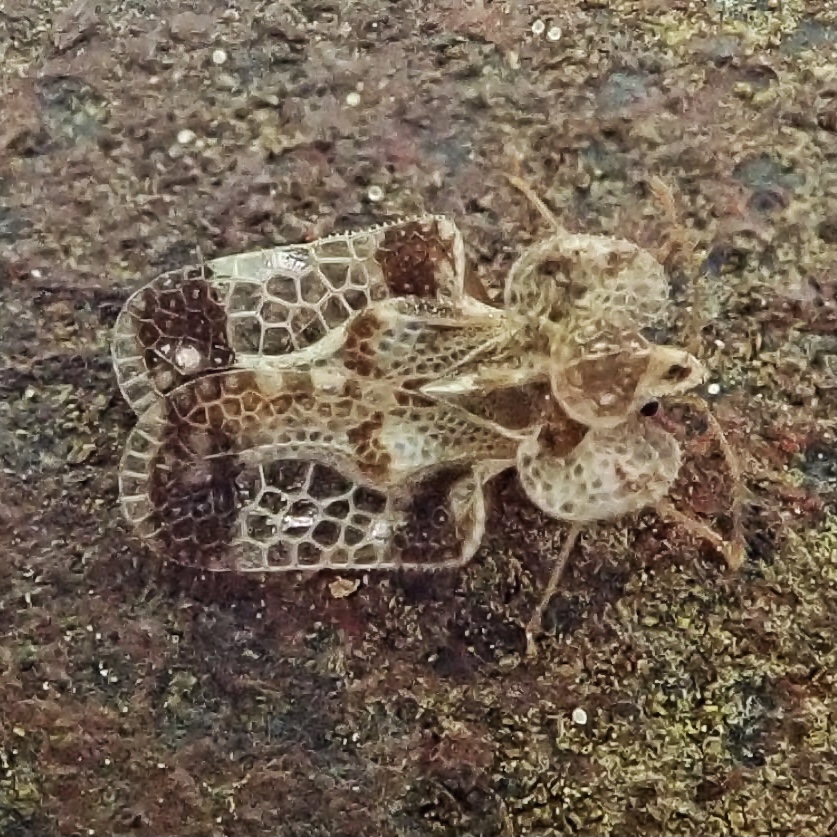
To the best of my knowledge I had never seen a lace bug of any sort before last Saturday, and I almost missed these guys. I thought it was just a tiny bit of seed husk at first. But it seemed to have a discernible pattern when I looked closely, and then it moved (an odd series of lunging bobs while remaining in one spot, which I’ve yet to see described in any literature; I observed several others also engaging in this behavior). So I snapped a photo, and enlarged it on my phone and thought ‘Wow! That’s a ….!?” Because it was spectacular and I knew I’d seen photos of something like it but couldn’t begin to remember what.
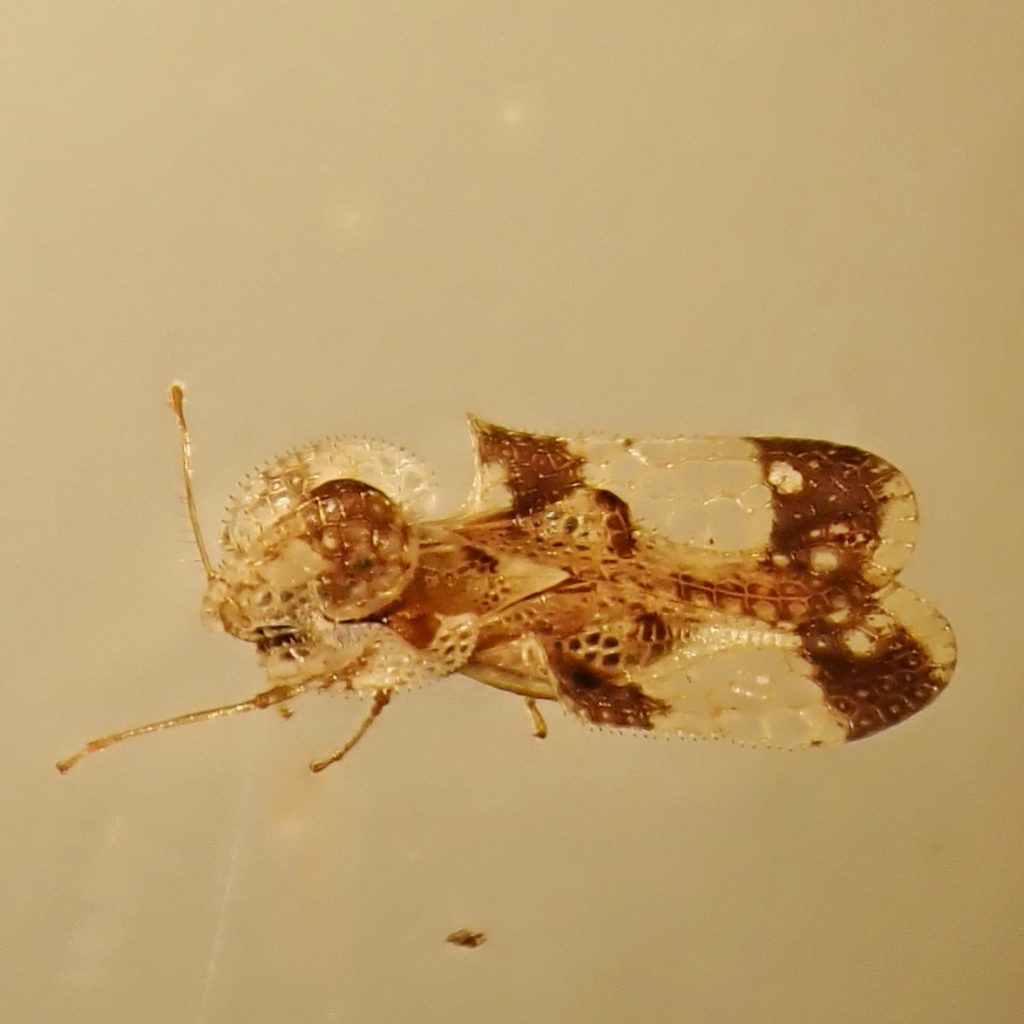
Later that evening I showed Craig Sondergaard a photo of this exquisite little hemipteran and he told me it was a lace bug (Tingidae). After paging through BugGuide I determined that it was genus Corythucha, and also found a key by Edmund Gibson from 1918. With that I came to the conclusion that it was Corythucha pergandei. Alexander Knudson (Tingidologist extraordinaire according to my friend Michael Palmer) was kind enough to look at my photos, and he confirmed the identification.
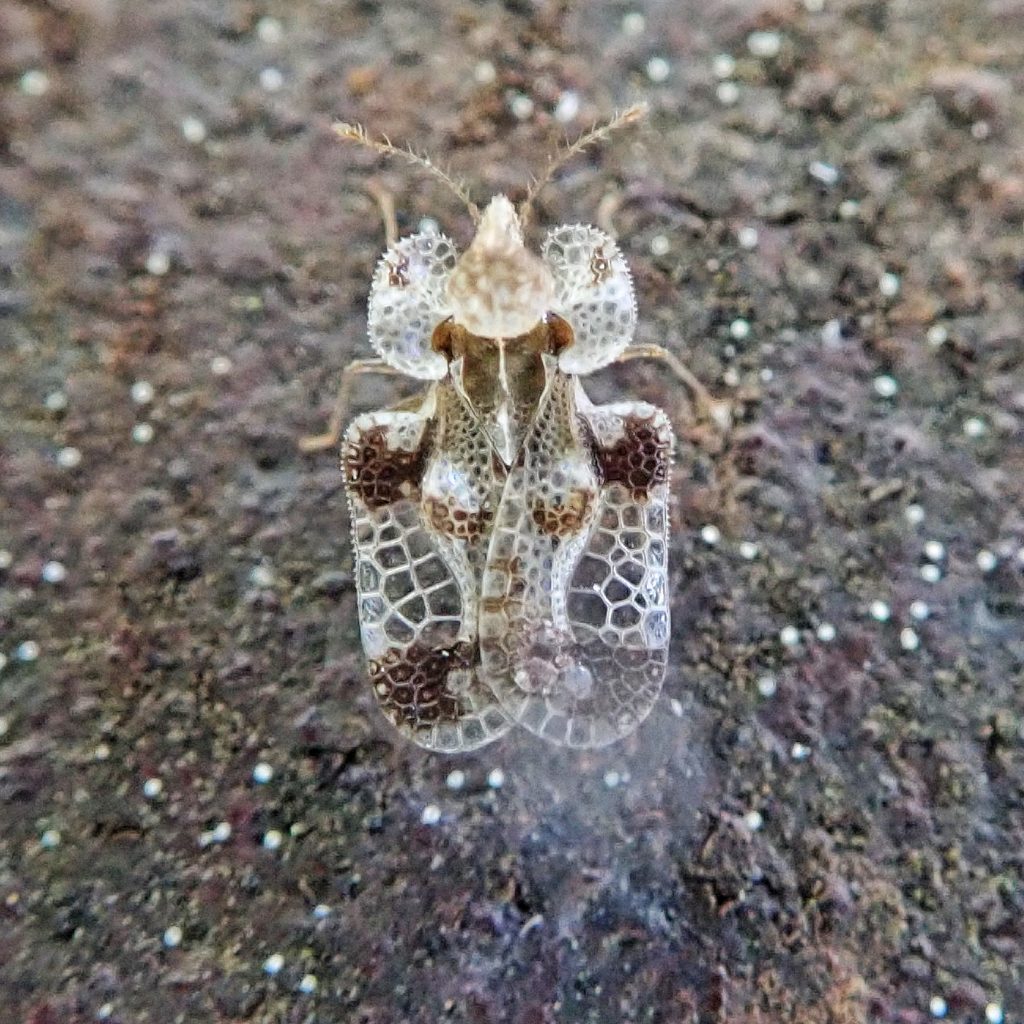
He also told me that this might be one of the first records of this species from Washington state (and would I send him the voucher specimens, which I’m only too happy to do), although there is verification of it from BC . My guess is that that is because it is undersurveyed rather than rare, since we certainly don’t lack for alders here (it’s preferred larval host and the basis for its common name), and that most casual bug lovers either miss seeing it or mistake it for a tiny fly or something inorganic. If it wasn’t for the focus provided by these posts I don’t think I’d have noticed them on the metal railing of a small bridge.
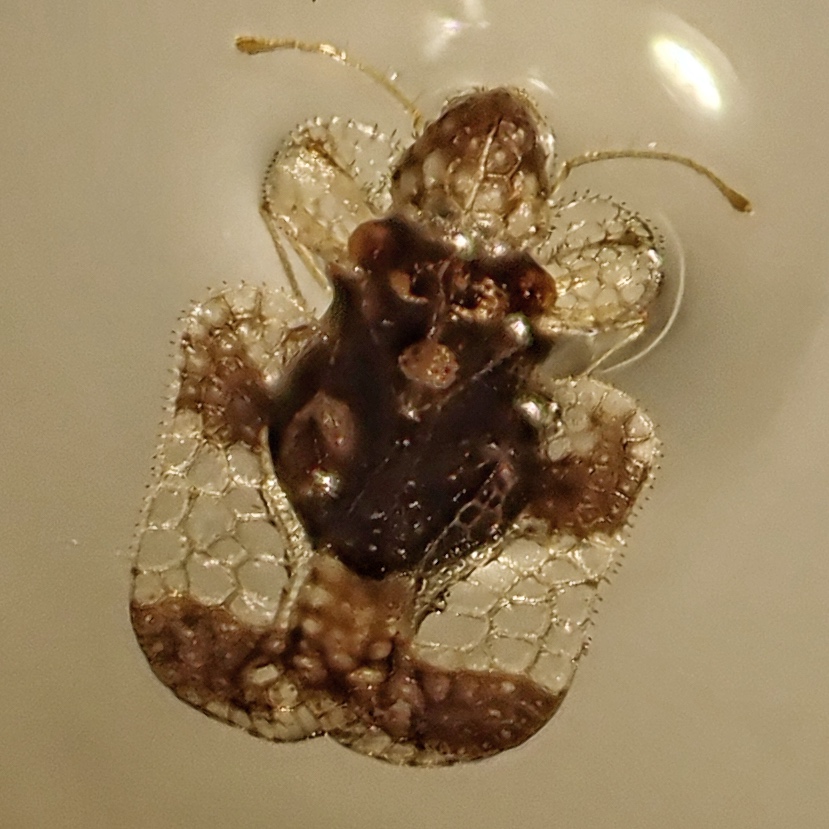
But I’m so glad I did! These Alder Lace Bugs are not only intricately figured with wonderful, rather geometric sculpting, but they are fascinating. They feed as nymphs (larvae) and as adults by poking their mouthparts into the sap containing middle layer of the underside of a leaf, excreting enzymes into that area, and sucking out the liquified sap. This results in a chlorotic (bleached white) spot on the dorsal surface. Even without bugs present it can be identified as lace bug predation by the excrement on the ventral surface. Spider mites and thrips feed in a similar way, but they don’t poop where they eat. When there are numbers of lace bugs feeding from a leaf it eventually withers and dies. Whether this is because of the removal of chloroplasts, or because of some level of toxicity in their saliva, I can not ascertain.
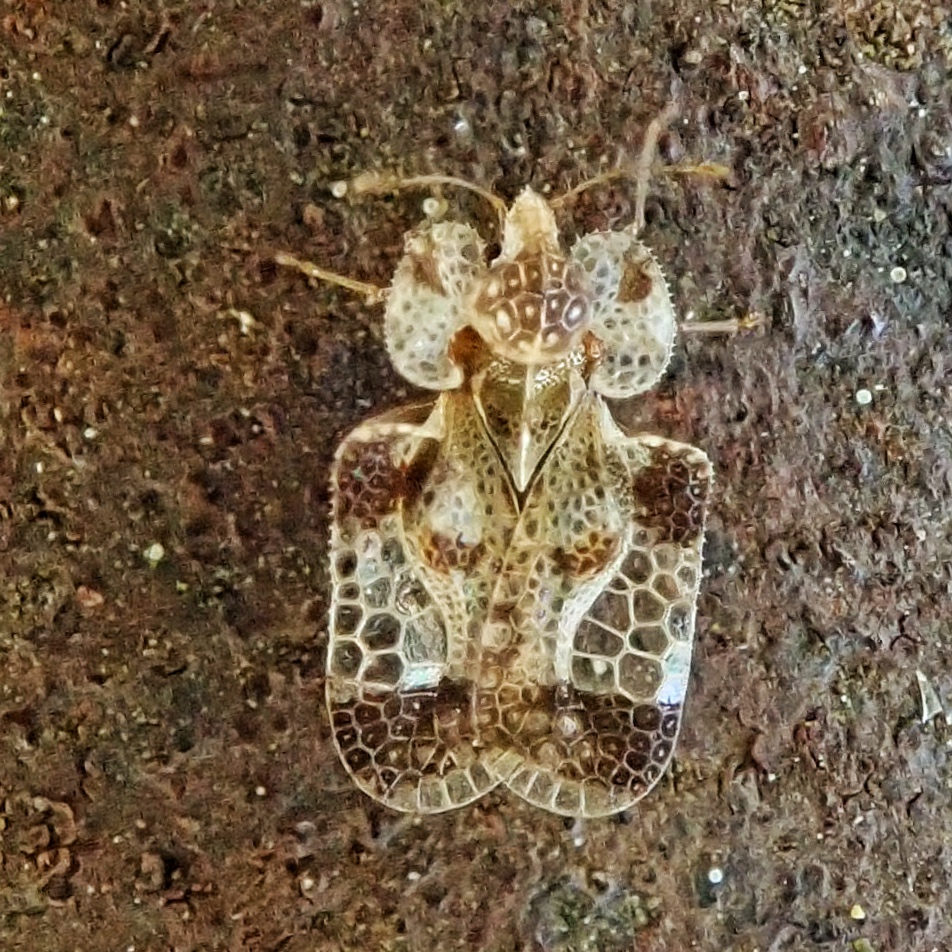
There are Tingids that are considered to be pest species, including Corythucha salicata, which can be problematic in apple orchards when it chooses apples over willows. But most lace bugs are very specific about their host plants, and Corythucha pergandei has so far shown no tendency to stray outside the circumscription of alders and birches.
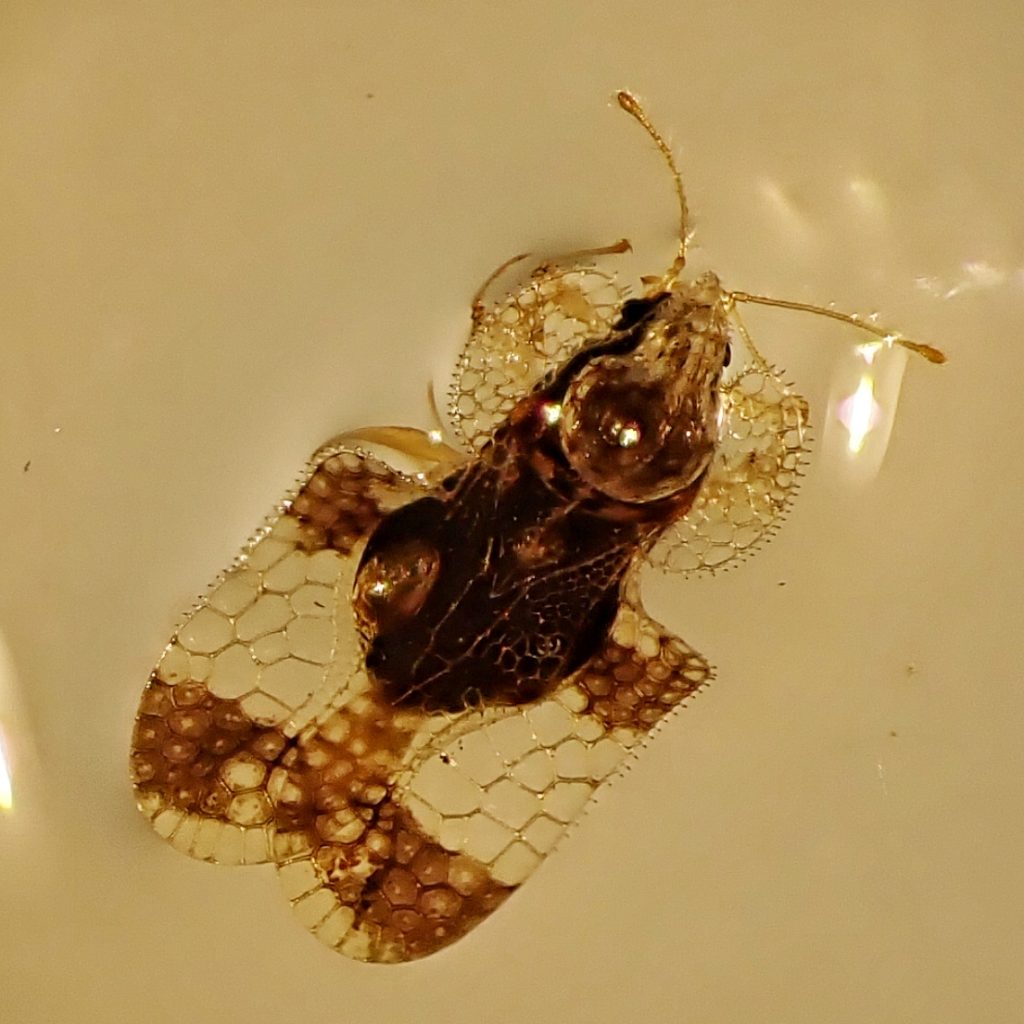
Description– Tiny (3mm) bug with transparent, netlike or lacy elytra and paranota, a globular hood over the head which is more than twice as tall as the median carina, and brown bands on the front and rear of the elytra; Elytra are straight on the margin; many of the cells in the brown bands have clear centers; paranota has a brown spot; hood twice as long as tall, and equal in length to the median carina; lateral carinae tall, but stop short of the hood; short spines on front half of elytral margin, and encircling the pronotal margin.
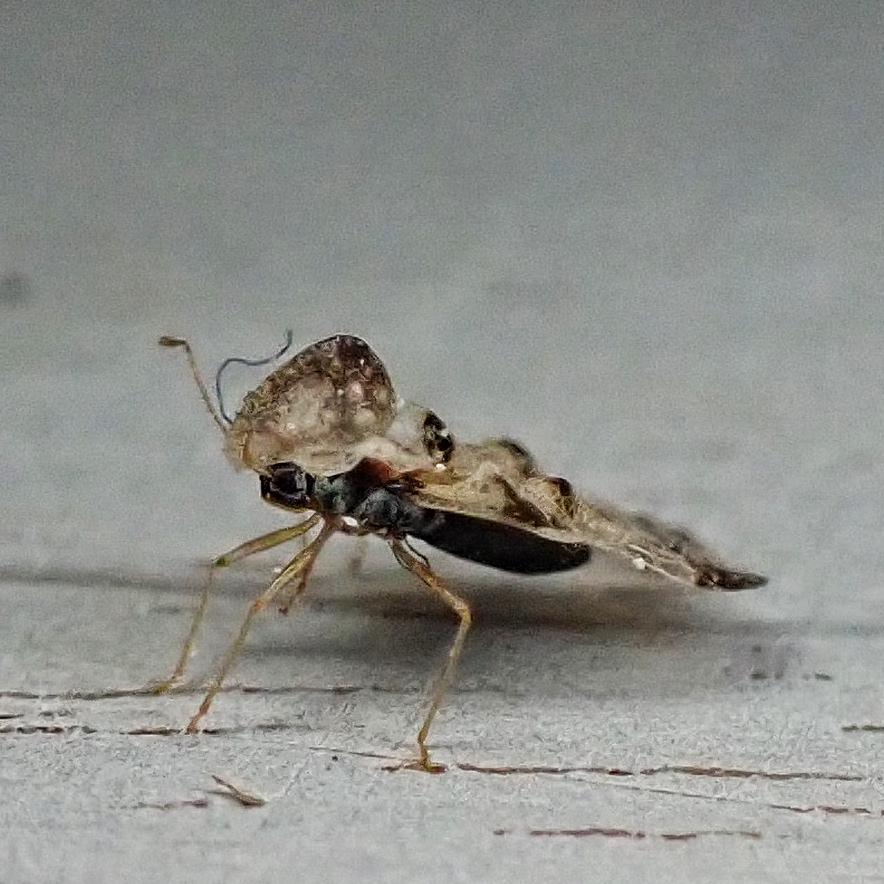
Similar species– High magnification, a key, and probably expert assistance are required for any positive identification in this genus, and the plant they were found on, as well as those nearby, is very useful information; C. salicata hood is less than twice as high as median carina; C. morrilli and C. occidentalis have concave margins of elytra; C. immaculata and C. distincta are all white.
Habitat– Found only where there are populations of alder or birch.
Range-North America; in our region it is probably found west of the Cascades, and in alder or birch groves to the east.
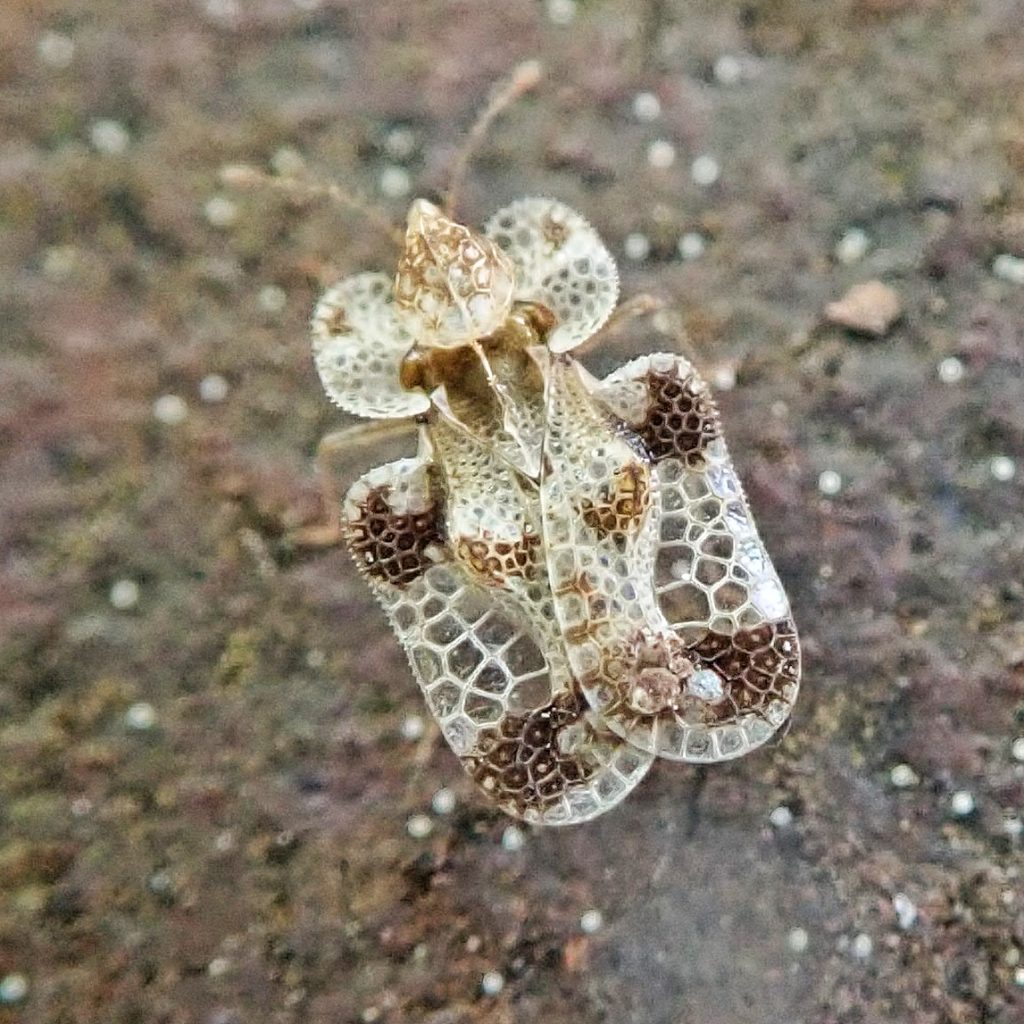
Eats– The only known larval hosts are Alnus spp. (alder) and Betula spp. (birch). Adults appear to feed on the same species, but may not be so specific. They have been found on Prunus spp. Ulmus spp. and Celtis spp., but it is uncertain if they are host plants.
Eaten by– Undoubtedly they are gleaned by insectivorous birds, but nothing I’ve found says so for sure; nor can I find any information on predation or parasitism of them by other insects. ETA- Alexander Knudson says that he has observed that lacewings, jumping spiders, lady beetles, and even parasitic wasps do attack most Corythucha species.
Reproduction-In southern climes it may produce three generations per year (trivoltine), but in our region it is probably univoltine or possibly bivoltine; eggs are laid on the underside of leaves of the host plant, and are partially inserted into them, beneath the hairs at the junction of the central vein and its branches; sometimes the eggs are covered in excrement to further camouflage them; time from ovipositing to adulthood is 4-7 weeks, depending on conditions. Overall lifespan a bit over a year.
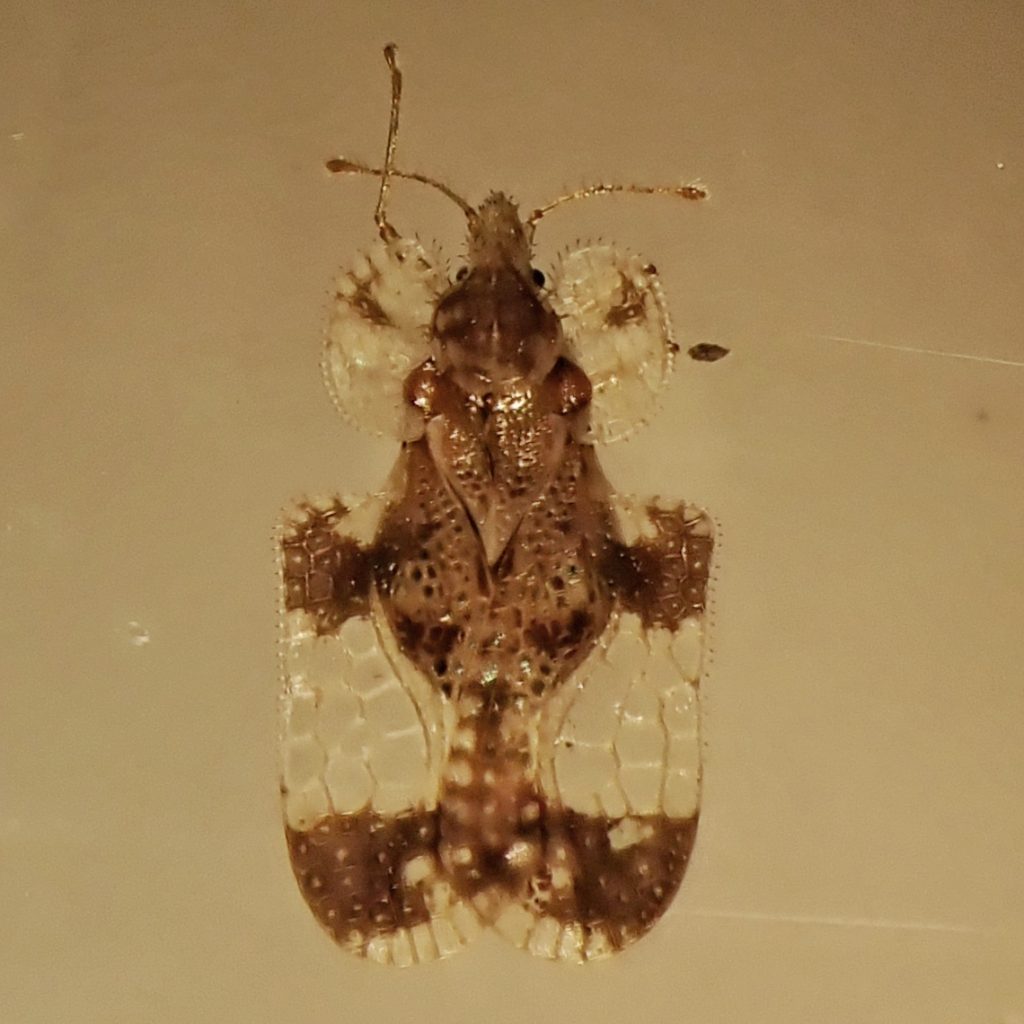
Adults active– Overwintering adults probably come out of diapause in March and last through June, depending on weather; then new adults are active from June through September after emerging from the larval phase; overwinter under cover as an adult in diapause, usually starting by the first week of October
Etymology of names– Corythucha translates from the Greek as ‘helmet bearer’, and references the helmet like ‘hood’ that covers the head. The specific epithet pergandei honors Theodore Pergande (1840-1916), the first entomologist to note this species.
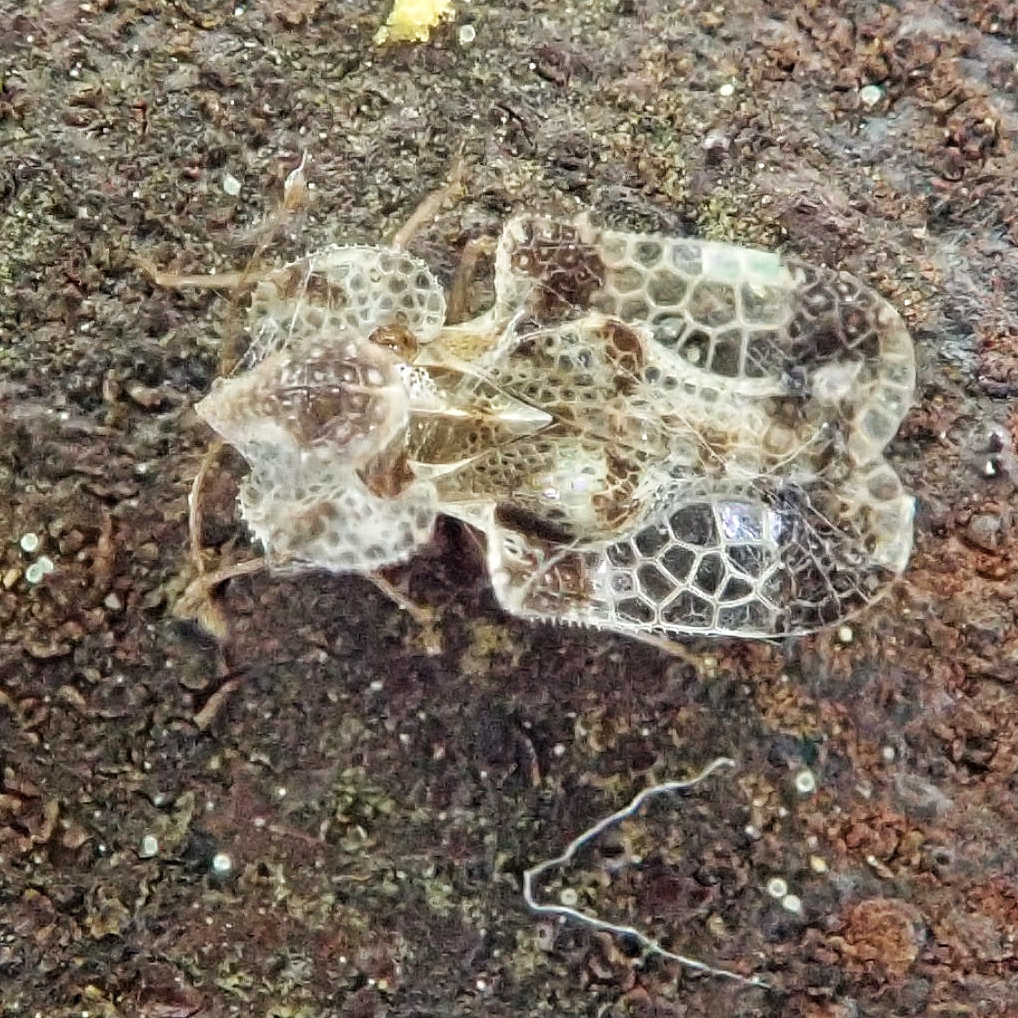
https://www.biodiversitylibrary.org/pdf4/130044200019608.pdf
https://bugguide.net/node/view/337875
https://www.jstor.org/stable/25082948
Corythucha pergandei – Google Scholar
https://content.ces.ncsu.edu/alder-lace-bug
http://entnemdept.ufl.edu/choate/tingidae.pdf
https://en.wikipedia.org/wiki/Theodore_Pergande
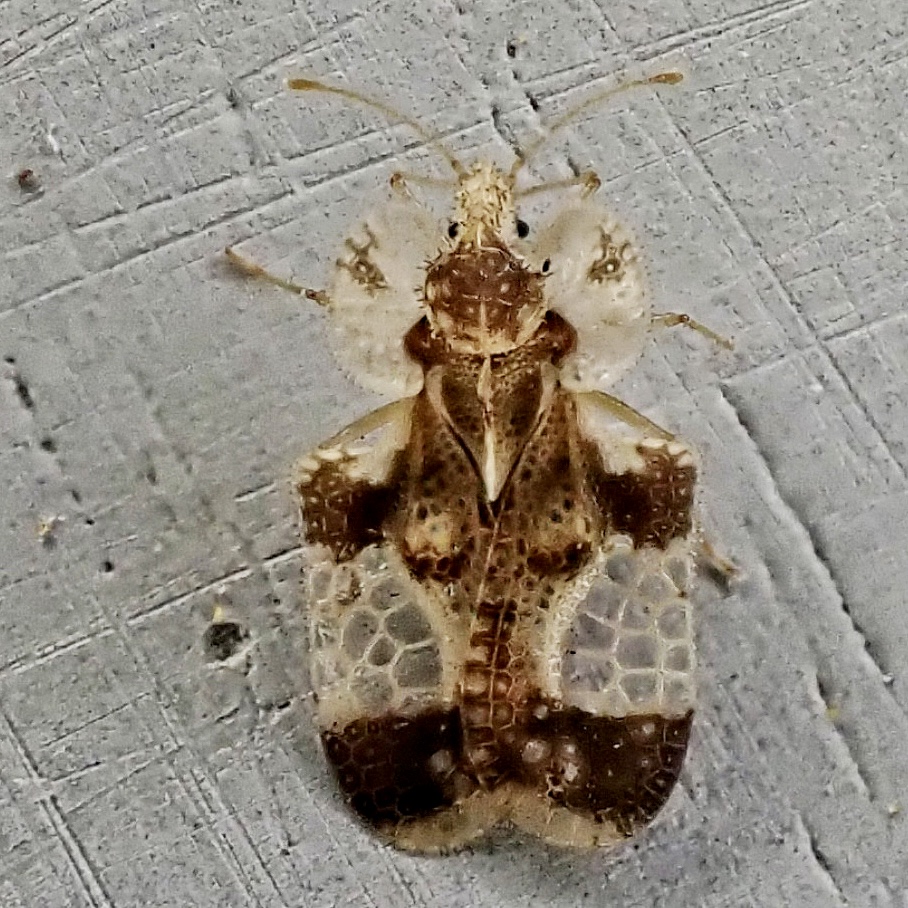
Absolutely amazing!
This is fascinating. Thank you!
Thanks for the appreciation!
Peculiar and fascinating. Who knew!? Thanks.
Thanks for this.